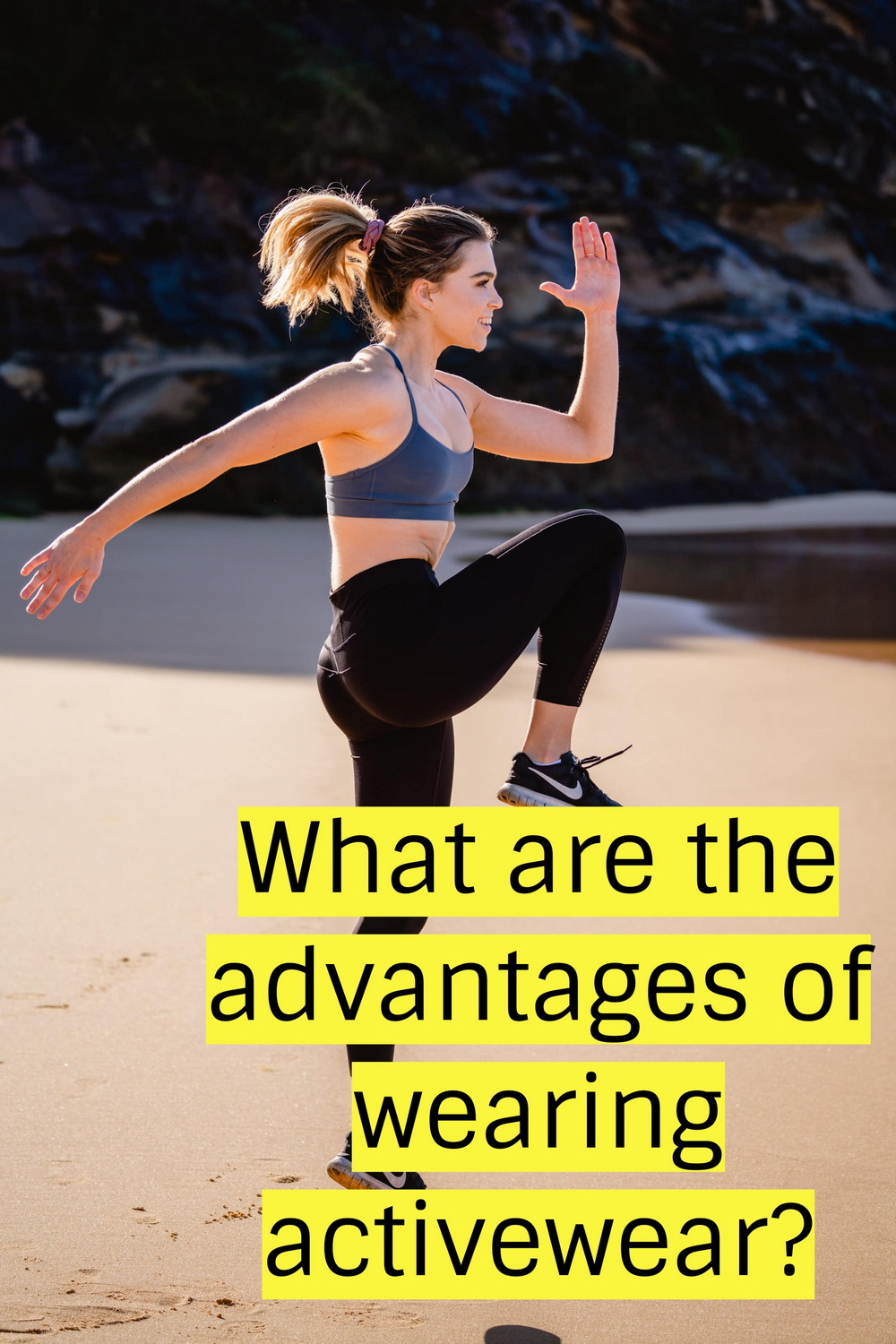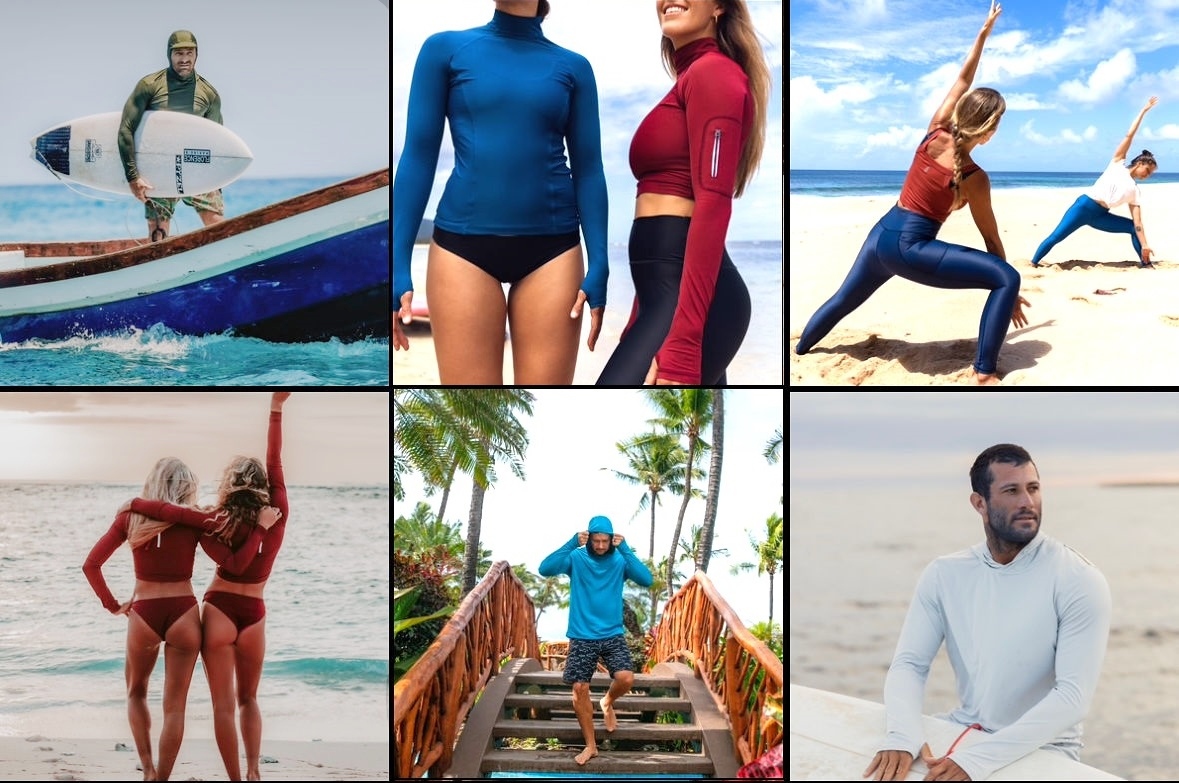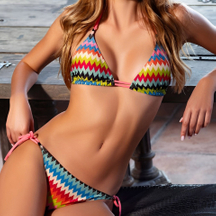Content Menu
● Introduction
● What Is Activewear?
● What Is Swimwear?
● Can Activewear Be Used as Swimwear?
>> Short Answer
>> Benefits of Using Activewear for Swimming
>> Drawbacks of Using Activewear for Swimming
● Key Considerations
>> 1. Fabric Composition
>> 2. Durability in Water
>> 3. Fit and Support
>> 4. Drying Time
>> 5. UV Protection
● When Can Activewear Be Used as Swimwear?
>> 1. Light Swimming or Wading
>> 2. Hybrid and "Active Swim" Collections
>> 3. Emergency or Spontaneous Use
● When Should You Avoid Using Activewear as Swimwear?
● User Experiences and Industry Trends
● Pros and Cons Table
● Choosing the Right Activewear for Swimming
● Best Types of Activewear for Swimming
● Best Activewear Brands for Swimming
● Care Tips for Using Activewear as Swimwear
● Expert and Community Opinions
● Frequently Asked Questions
>> 1. Can activewear be used as swimwear in chlorinated pools?
>> 2. Is it safe to swim in leggings or sports bras?
>> 3. Will activewear dry as quickly as swimwear?
>> 4. Are there activewear brands that make swim-friendly pieces?
>> 5. How can I extend the life of activewear used for swimming?
● Conclusion
● Citations:
Introduction
In the age of athleisure and multi-functional clothing, it's no surprise that people are asking, "can activewear be used as swimwear"? With busy lifestyles and a desire for convenience, many fitness enthusiasts and everyday consumers are looking for ways to transition seamlessly from the gym to the pool—or even from a morning run to a spontaneous swim at the beach. But is it really practical, safe, and effective to use your favorite leggings or sports bra in the water? This comprehensive article delves into the science, practicality, benefits, and drawbacks of using activewear as swimwear, supported by expert opinions, user experiences, and industry trends.

What Is Activewear?
Activewear refers to clothing specifically designed for physical activities, sports, and exercise. Common examples include leggings, sports bras, tank tops, and athletic shorts. These garments are typically made from moisture-wicking, breathable, and stretchy materials such as polyester, spandex, and nylon. The primary goals are:
- Comfort and flexibility during movement
- Moisture management (wicking sweat away from the body)
- Durability for repeated wear and washing
- A snug, supportive fit[1][2]
Common types of activewear include:
- Leggings
- Sports bras
- Tank tops
- Shorts
Activewear is designed for flexibility, breathability, and comfort, making it suitable for various land-based activities.

What Is Swimwear?
Swimwear, on the other hand, is purpose-built for water activities. Whether it's a bikini, one-piece, swim trunks, or rash guard, swimwear is engineered to:
- Withstand harsh pool chemicals (like chlorine) and saltwater
- Dry quickly after getting wet
- Maintain shape and elasticity when soaked
- Offer UV protection for outdoor swimming
- Reduce drag in the water for better swimming performance[3][2]
Swimwear includes:
- Bikinis
- One-piece swimsuits
- Rash guards
- Board shorts
Swimwear is engineered to reduce drag in the water, provide support, and prevent chafing, making it ideal for swimming.

Can Activewear Be Used as Swimwear?
Short Answer
Yes, activewear "can" be used as swimwear in certain situations, but it comes with important caveats regarding comfort, durability, and performance[4][5][2].Here are some factors to consider:
Benefits of Using Activewear for Swimming
1. Versatility: Activewear can be worn for multiple activities, making it a practical choice for those who engage in both land and water sports. For instance, a quick-drying tank top can transition from a workout to a swim session.
2. Comfort: Many activewear pieces are designed for comfort and flexibility, which can be beneficial when swimming casually. The moisture-wicking properties help keep the body dry during workouts and can provide some comfort in the water.
3. Style: Activewear often comes in trendy designs and colors, allowing individuals to express their style even while swimming. This can be particularly appealing for those who want to look fashionable at the beach or pool.
4. Quick-Drying Materials: Some activewear is made from quick-drying fabrics, which can be advantageous for those who want to transition from swimming to other activities without feeling wet for long periods.
Drawbacks of Using Activewear for Swimming
1. Water Absorption: Unlike swimwear, many activewear fabrics absorb water, which can make them heavy and uncomfortable when wet. This can hinder swimming performance and enjoyment.
2. Durability Issues: Activewear is not designed to withstand the harsh conditions of chlorinated pools or saltwater. Over time, exposure to these elements can damage the fabric, leading to a shorter lifespan compared to traditional swimwear.
3. Chafing and Discomfort: The seams and construction of activewear may not be optimized for swimming. This can lead to chafing and discomfort during extended periods in the water.
4. Lack of Support: Swimwear is designed to provide support and coverage, which may not be the case with activewear. For example, sports bras may not offer the same level of support as a well-constructed swimsuit.
Key Considerations
1. Fabric Composition
- Activewear: Usually made from blends of polyester, nylon, and spandex. These materials are moisture-wicking and breathable, but not always water-repellent or chlorine-resistant[1][6].
- Swimwear: Uses similar base materials, but often treated or woven to resist chlorine and saltwater, dry quickly, and retain shape[3][2].
2. Durability in Water
- Chlorine and Saltwater: Regular activewear can degrade quickly in chlorinated pools or salty ocean water, leading to fading, stretching, or fabric breakdown[1][6].
- Specialized Swimwear: Designed to withstand these harsh conditions, maintaining color, elasticity, and integrity over time[2].
3. Fit and Support
- Activewear: Provides support for land-based activities. However, it may not stay in place or provide the same hydrodynamics as swimwear, potentially causing drag or discomfort in the water[6].
- Swimwear: Engineered to fit snugly, reduce drag, and stay secure during swimming[3][2].
4. Drying Time
- Activewear: Moisture-wicking, but not always quick-drying when fully soaked. May feel heavy or uncomfortable after swimming[7][6].
- Swimwear: Dries rapidly, making it more practical for transitioning from water to land[3][7].
5. UV Protection
- Activewear: Some pieces offer UV protection, but not all. Check labels if sun safety is a concern[5][2].
- Swimwear: Often includes built-in UV protection, especially for outdoor use[3][2].
When Can Activewear Be Used as Swimwear?
1. Light Swimming or Wading
If you're planning to take a quick dip, wade in shallow water, or engage in low-impact water activities, certain types of activewear—particularly those made from quick-drying, synthetic materials—can suffice[1][2].
2. Hybrid and "Active Swim" Collections
Many brands now offer hybrid collections designed to function both as activewear and swimwear. These pieces are made from water-resistant, chlorine-resistant fabrics and are marketed as "active swim sets" or "sweat-to-swim" apparel[8][7].
3. Emergency or Spontaneous Use
Caught without your swimsuit? In a pinch, activewear can be used for swimming, but be mindful of potential discomfort, reduced performance, and faster fabric degradation[1][6].
When Should You Avoid Using Activewear as Swimwear?
- Prolonged or Regular Swimming: Frequent exposure to chlorine or saltwater will degrade regular activewear quickly[1][6].
- Performance Swimming: For lap swimming, competitions, or water sports, dedicated swimwear is essential for comfort, safety, and speed[3][6].
- Sensitive Skin: Some activewear fabrics may cause chafing or irritation when wet, especially if the seams are not flat-locked or water-optimized[6].
User Experiences and Industry Trends
Many users report positive experiences using activewear for swimming, especially for casual dips or water-based workouts. For example, one user shared that they enjoyed swimming in Gymshark and LSKD activewear during a road trip, appreciating the flattering fit and coverage[9]. However, concerns about fabric durability and chlorine damage were also raised, with some opting for inexpensive activewear for occasional use[9].
The industry has responded to this demand by creating activewear that doubles as swimwear. Brands like Ell & Voo, Lorna Jane, and Roxy now offer "active swim" collections that handle both sweat and water with ease, featuring supportive designs and quick-drying, chlorine-resistant fabrics[7][8].
Pros and Cons Table
| Factor | Activewear as Swimwear | Dedicated Swimwear |
| Chlorine Resistance | Low to Moderate | High |
| Saltwater Resistance | Low to Moderate | High |
| Drying Speed | Moderate | High |
| Fit & Hydrodynamics | Moderate | High |
| Comfort When Wet | Varies | High |
| UV Protection | Varies | Often Included |
| Durability | Lower | High |
| Cost | Often Lower | Varies |
| Style Options | High | High |
Choosing the Right Activewear for Swimming
If you decide to wear activewear for swimming, consider the following tips to ensure a better experience:
1. Opt for Quick-Drying Fabrics: Look for activewear made from materials like nylon or polyester, which dry quickly and are more resistant to water.
2. Check for Chlorine Resistance: Some activewear brands offer chlorine-resistant options, which can help prolong the life of your garments when used in pools.
3. Choose the Right Fit: Ensure that the activewear fits snugly but comfortably. Loose-fitting garments can create drag in the water, while overly tight pieces may restrict movement.
4. Consider Hybrid Options: Some brands offer hybrid activewear that is specifically designed for both land and water activities. These pieces often combine the best features of both activewear and swimwear.
Best Types of Activewear for Swimming
If you decide to use activewear as swimwear, choose items that closely mimic swimwear in material and fit:
- Rash Guards: Offer sun protection and are made from quick-drying, tight-fitting materials[5].
- Swim Leggings: Designed for water, but some activewear leggings can work if made from durable synthetics[5].
- Sports Bras: Choose those with minimal padding and quick-drying fabrics. Some brands offer water-specific sports bras[5].
- Bike Shorts/Swim Shorts: Look for shorts with a snug fit and quick-drying properties[9][5].
- Two-Piece Sets: Some activewear brands offer matching tops and bottoms that can double as swimwear[5].
Best Activewear Brands for Swimming
While many activewear brands focus on land-based activities, some have developed lines that are suitable for swimming. Here are a few notable options:
1. Athleta: Known for its high-quality activewear, Athleta also offers swimwear made from durable, quick-drying materials.
2. Lululemon: This brand has a range of activewear that can double as swimwear, particularly their tank tops and shorts designed for water activities.
3. Nike: Nike's swimwear line includes pieces that are designed for both performance and style, making them a great choice for active individuals.
4. Speedo: While primarily a swimwear brand, Speedo also offers activewear that is suitable for both swimming and land activities.
5. Under Armour: Known for its moisture-wicking technology, Under Armour offers activewear that can be used for swimming, especially in casual settings.
Care Tips for Using Activewear as Swimwear
- Rinse Immediately: Always rinse with fresh water after swimming to remove chlorine or salt[7].
- Air Dry: Avoid high heat, which can damage elastic fibers.
- Rotate Garments: Don't use the same piece for every swim to extend its lifespan.
- Check for Damage: Regularly inspect for signs of wear, such as fading, stretching, or thinning fabric.
Expert and Community Opinions
> "If you're looking for some gear that can take you from gym to swim or vice versa, activewear is likely your best bet. Activewear is already designed to have many of the same qualities that we look for in swimsuits, such as moisture-wicking material that dries quickly, breathable fabrics, and lightweight fabrics... However, not all activewear is created equal."
— tasc Performance[4]
> "The short answer is yes; activewear can be used for swimming. However, not all activewear is suitable for use in the water, and it's important to choose the right apparel that will not only be comfortable during your workout but will also protect your skin from the sun's harmful rays."
— Ingor Sports[5]
Frequently Asked Questions
1. Can activewear be used as swimwear in chlorinated pools?
Activewear can be used in chlorinated pools occasionally, but chlorine will degrade most activewear fabrics faster than swimwear. For regular swimming, choose swimwear designed for chlorine resistance[1][6][2].
2. Is it safe to swim in leggings or sports bras?
Yes, as long as the garments fit snugly and don't restrict movement. However, they may become heavy and less comfortable when wet, and may not provide the same support as swimwear[5][6][2].
3. Will activewear dry as quickly as swimwear?
Generally, no. Swimwear is engineered to dry rapidly, while activewear may retain more water and take longer to dry[3][7][6].
4. Are there activewear brands that make swim-friendly pieces?
Yes! Many brands now offer hybrid collections or "active swim" lines designed for both land and water activities. Look for features like chlorine resistance and quick-drying fabrics[8][7].
5. How can I extend the life of activewear used for swimming?
Rinse thoroughly after each swim, air dry, and avoid prolonged exposure to chlorine or saltwater. Rotate your garments and inspect for wear regularly[7][2].
Conclusion
So, "can activewear be used as swimwear"? The answer is yes—for light, casual swimming or in a pinch. However, for regular, performance, or long-term use, dedicated swimwear is the superior choice for durability, comfort, and safety. The rise of hybrid "active swim" collections offers a compelling solution for those seeking true versatility. Always consider fabric, fit, and intended use before making your choice, and follow care instructions to maximize garment lifespan.
Citations:
[1] https://www.loveloren.com/blogs/resource/what-is-activewear-and-can-it-be-used-for-swimming
[2] https://www.ingorsports.com/can-we-use-activewear-for-swimming.html
[3] https://www.avvini.com.au/blogs/news/can-i-wear-active-wear-for-swimming
[4] https://www.tascperformance.com/blogs/articles/can-activewear-be-used-for-swimming
[5] https://www.ingorsports.com/can-activewear-be-used-for-swimming.html
[6] https://stretchburn.com/blogs/our-blog/can-activewear-be-used-for-swimming
[7] https://www.rebelsport.com.au/blog/gym-and-fitness/sweat-to-swim-activewear-that-doubles-as-swimwear.html
[8] https://www.fitnessfindsonthemainline.com/ontheblog/activewear-brands-that-are-adding-swimwear
[9] https://www.reddit.com/r/AusFemaleFashion/comments/1ga0nx4/active_wear_for_swimming/
[10] https://www.youtube.com/watch?v=pvL347OyojQ
[11] https://www.titlenine.com/womens-athletic-swimwear/
[12] https://baliswim.com/choosing-swimsuit-material-the-best-swimsuit-fabric-for-you/
[13] https://www.instagram.com/p/DIlxyoXIiho/
[14] https://www.ladymate.com/can-sportswear-be-used-as-swimwear.html
[15] https://www.reddit.com/r/sewing/comments/1hbtube/is_there_a_difference_between_like_swimwear/
[16] https://deepwear.info/blog/swimwear-and-activewear-manufacturing-exploring-fabrics/
[17] https://www.avvini.com.au/blogs/news/can-i-wear-active-wear-for-swimming?srsltid=AfmBOooQDSpdrqk17UkPJqTiuc2u3fgEPhWWS6HlMz5xQBz2FkFBqZuK
[18] https://www.loveloren.com/blogs/resource/what-is-activewear-and-can-it-be-used-for-swimming?srsltid=AfmBOoptJ5jJ9oKt5L7wi9g4hJq1t3zeVYkULfyBsLXLcmYau0Kgcib2
[19] https://www.outsideonline.com/outdoor-gear/water-sports-gear/swimwear-also-workout-attire/
[20] https://beachriot.com
[21] https://www.youtube.com/watch?v=sRsNbeXeoXc
[22] https://www.youtube.com/watch?v=aid78yQ0yMU
[23] https://www.tascperformance.com/blogs/news/can-activewear-be-used-for-swimming




































